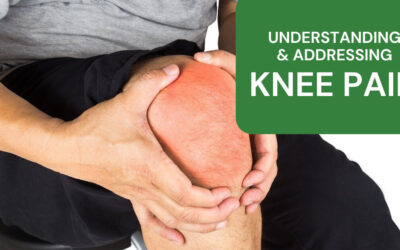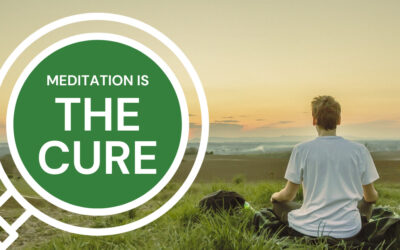Understanding Upper Cross Syndrome
Sedentary Lifestyle and Poor Posture are Key Factors in Upper Cross Syndrome
In today’s digital age, most of us spend hours hunched over computer screens and smartphones or sitting in comfy chairs watching TV. This sedentary lifestyle, combined with poor posture, can lead to a condition known as Upper Cross Syndrome (UCS). UCS is a common postural issue that can result in discomfort, pain, and decreased quality of life.
Upper Cross Syndrome is a musculoskeletal disorder characterized by a specific pattern of muscle imbalances in the upper body. It primarily affects the neck, shoulders, and upper back. This condition results from a combination of tight and overactive muscles and weakened and underactive muscles. The “cross” refers to the pattern of muscle groups involved, which forms an “X” shape when observed from the side.
The following are five factors that contribute to the development of Upper Cross Syndrome:
- Poor Posture: Slouching or spending long periods in a forward head and rounded shoulder position can lead to muscle imbalances.
- Sedentary Lifestyle: A lack of physical activity and prolonged periods of sitting contribute to weakened postural muscles.
- Repetitive Movements: Repetitive tasks involving forward-reaching movements, such as typing or using a mouse, can exacerbate the condition.
- Stress: High-stress levels can lead to muscle tension and contribute to the development of UCS.
- Lack of Awareness: Many people are unaware of the importance of good posture and muscle balance, leading to a lack of preventative measures.
Upper Cross Syndrome can result in a range of symptoms, including:
- Neck pain and stiffness
- Shoulder pain and tightness
- Headaches, particularly tension headaches
- Reduced range of motion in the neck and shoulders
- Upper back pain
- Forward head posture
- Muscle imbalances and weakness
The good news is that Upper Cross Syndrome can be improved and managed through lifestyle changes, exercises, and conscious efforts to maintain good posture.
Here are some effective strategies to help alleviate the symptoms and prevent further progression of UCS:
- Awareness and Education: Recognize the importance of good posture and understand the consequences of poor posture. Knowledge is the first step toward improvement.
- Ergonomic Work Environment: Adjust your workspace to promote better posture. Ensure that your computer screen is at eye level, and use an ergonomic chair that supports your lower back.
- Stretching: Regularly perform stretching exercises to relieve neck, shoulders, and upper back tension. Stretching can help improve flexibility and reduce muscle tightness.
- Strengthening Exercises: Focus on strengthening the weak muscles in Upper Cross Syndrome, such as the deep neck flexors and the mid-back muscles. Typical exercises include chin tucks, scapular retractions, and rows.
- Postural Exercises: Incorporate exercises that promote good posture, like wall angels and chest openers, into your routine.
- Regular Breaks: Take short breaks to stand up, move, and stretch if you sit a lot in your day. This can help prevent the development of UCS. The CDC recommends moving every 30 minutes.
- Massage and Physical Therapy: Consider seeking the help of a professional massage therapist or physical therapist to address muscle imbalances and relieve tension.
- Mindful Movement: Practice yoga, Pilates, or tai chi promotes body awareness and improved posture. In addition, a yoga practice stretches the muscles while focusing on balance.
- Stress Management: Implement stress-reduction techniques like meditation and deep breathing exercises to reduce muscle tension.
Bottom Line: Upper Cross Syndrome is a common postural issue in today’s sedentary environment. It can lead to various discomforts and health problems if not addressed. You can effectively manage and even improve Upper Cross Syndrome by increasing awareness, making ergonomic adjustments, and incorporating stretching and strengthening exercises into your daily routine. Remember that it’s essential to be proactive in preventing and addressing this condition to maintain a healthy, pain-free upper body and overall well-being.
Here are a few videos to help guide you on your health and wellness journey:
Are you tired of living with pain?
Are your activities and daily choices determined by your level of pain?
Are you ready to change your life for the better and gain back your physical freedom?
My unique and custom designed approach comes from years of training, education and experience. Together, we will get you back to living pain free and enjoying life.
Sign up for a private session today
It’s never too late to try something new.

Related Articles:
Understanding and Addressing Knee Pain
Knee Pain is a Common Ailment Knee pain is a common ailment that can significantly impact daily life, hindering mobility and causing discomfort. Understanding the causes and managing knee pain is essential for maintaining overall well-being, whether it's due to...
Meditation is the CURE
Meditation has gained recognition for having a profound effect on the mind and body, leading to improved overall health and longevity.
Movement is the CURE
Including movement into your day can be the cure to many health issues that plague us later in life. Movement has incredible benefits to overall health and helps promote longevity.



